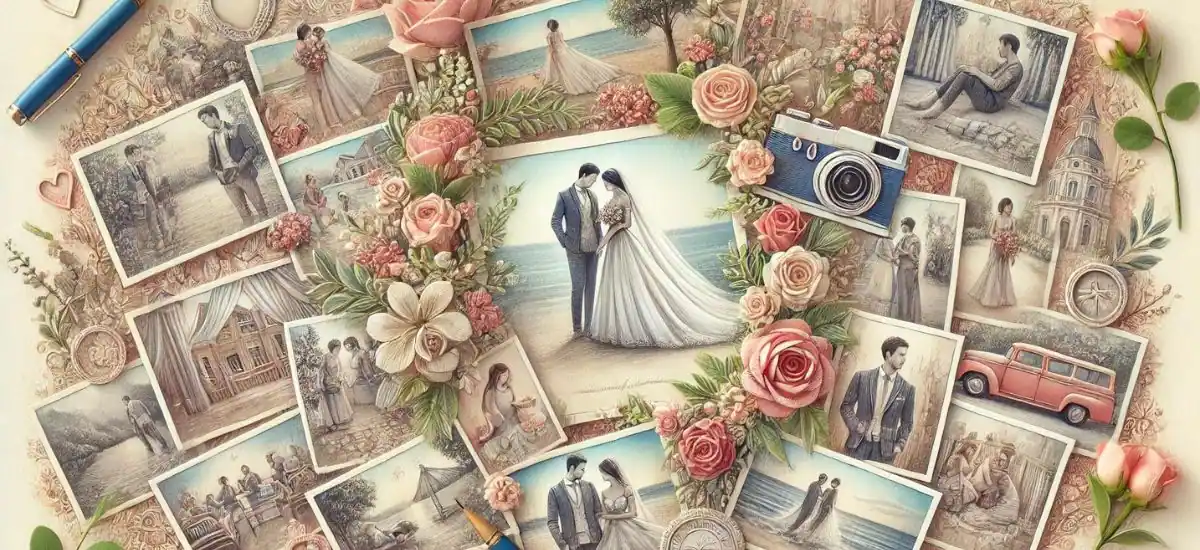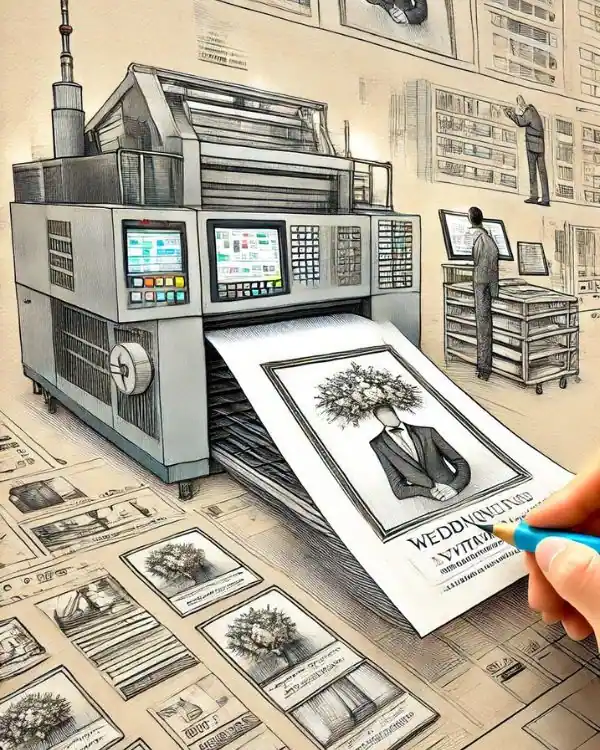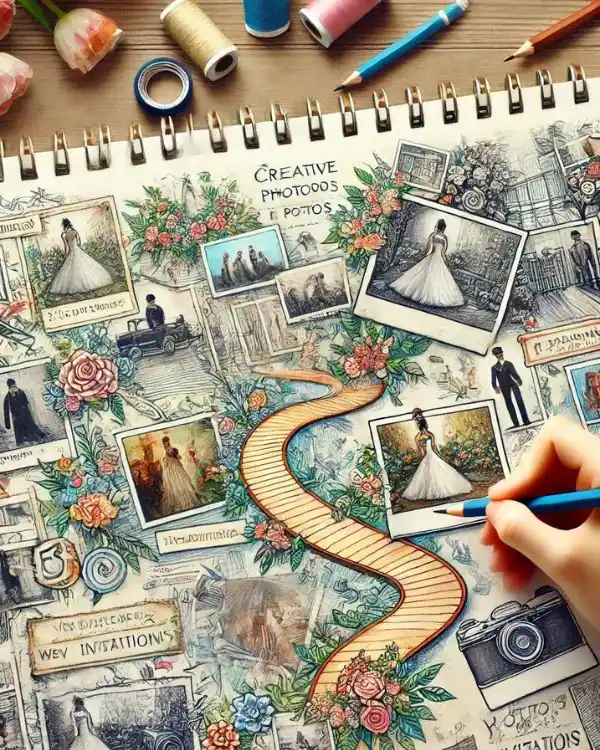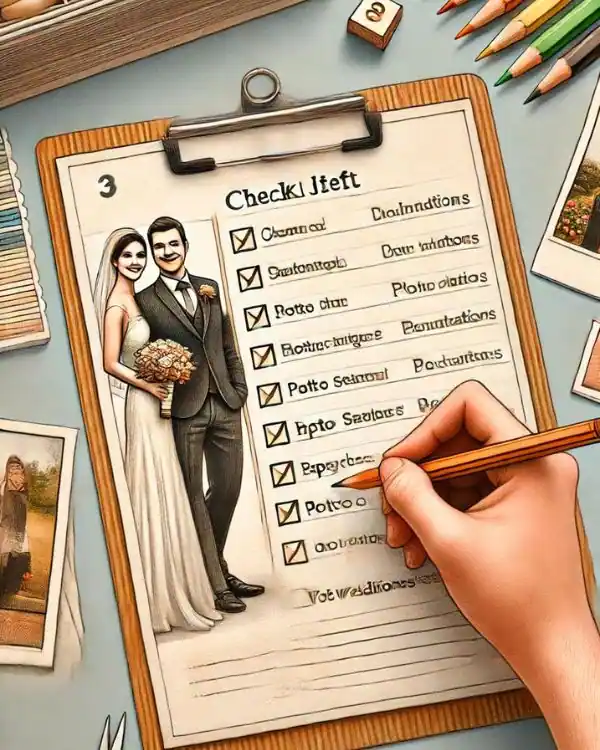Advertisement
By IS Team
Turn Heads With These Photo Wedding Invitations: Ideas That Guests Can't Ignore

Advertisement
Wedding invitations with pictures offer a unique and personal touch that sets the tone for your big day. By choosing high-resolution photos that reflect your relationship, you can create a stunning, memorable invitation.
Balance text and images for clarity, ensuring all essential details are easy to read. Consider the right paper and printing methods to enhance photo quality, and respect etiquette, privacy, and cultural sensitivities.
With careful planning, your invitations will become cherished keepsakes, beautifully telling your love story and engaging your guests from the first glance. 💌
📸Choosing the Right Photos for Your Invitations

- Reflect Your Bond: Select photos that capture your essence as a couple. Whether it's a candid shot from your first vacation or a romantic engagement photo session, each image should reflect your journey and personality.
- High Quality is Key: Ensure photos are high-resolution to avoid any loss of detail in printing. Consistency in theme and color also helps set a cohesive tone for your wedding.
- Creative Engagement Shots: Think outside the box with your engagement photos. Use them as a playful teaser of what guests can expect at your wedding.
Design Elements and Layouts
Crafting visually appealing wedding invitations involves selecting the right design elements and layouts to reflect your style and ensure the invites are as beautiful as they are meaningful.
Overview of Different Design Styles
- Minimalist: Emphasizes simplicity with a clean layout, featuring minimal text alongside one or two prominent photos.
- Vintage: Incorporates classic typography and retro designs, often paired with sepia-toned or black-and-white photos for an old-world charm.
- Modern: Ideal for a chic, contemporary feel, using bold photo placements, vibrant colors, and trendy fonts.
Each style uniquely showcases your photos, aligning with your wedding's theme and tone.
Layout Tips: Balancing Text and Imagery for Visual Impact
- Harmony and Contrast: Place text so it complements rather than competes with your images, using contrasting colors for clarity.
- Hierarchy: Highlight key details like your names and the date prominently, with less important information smaller and less obtrusive.
- Flow: Ensure the layout guides the eye smoothly from one element to another, aligning text with features in your images.
The Role of Color Schemes in Enhancing Photo-centric Invitations
- Complementary Colors: Choose colors that enhance the tones in your photos, like soft blues and tans for beach scenes.
- Mood Setting: Use colors to set the mood of the invitation, from soft pastels for romance to bold hues for a lively celebration.
- Consistency: Maintain a consistent color scheme across all wedding stationery for a cohesive look.
By combining these design strategies, your wedding invitations will beautifully convey the essence of your celebration and create lasting impressions.
Technical Aspects of Photo Integration

Successfully integrating photos into wedding invitations requires attention to the technical details to ensure high-quality prints.
Best Practices for Photo Resolution and Dimensions
- High Resolution: Use photos with at least 300 dpi (dots per inch) for sharp, clear prints.
- Proper Dimensions: Adjust the photo size to fit your invitation, ensuring image quality isn't compromised in larger prints.
Digital vs. Traditional Printing Methods
- Digital Printing: Efficient for complex images, though it may lack the fine detail of traditional methods.
- Traditional Printing (Offset): Delivers superior print quality and durability, perfect for large orders.
Understanding these technical aspects will help ensure your wedding invitations are printed with optimal clarity and vivid colors, making them memorable for your guests.
Incorporating Text with Images
Effectively combining text with images in your wedding invitations can enhance both readability and visual appeal, making every detail count.
Guidance on Font Selection and Typography
- Complementary Fonts: Choose fonts that complement rather than compete with your images. For a balanced design, consider using:
- Serif fonts for a classic, timeless look.
- Sans-serif fonts for a cleaner, more modern feel.
- Legibility: Ensure the font size and style are easy to read. Avoid overly decorative fonts for essential information.
Examples of Arranging Text for Readability and Aesthetic Harmony
- Text Placement: Position text in less busy areas of the photo to maintain clarity. Use contrasting text colors to stand out against the background.
- Hierarchy: Create a visual hierarchy by making key information like names and dates larger and more prominent. Use smaller text for secondary details to avoid visual clutter.
Tips for Incorporating Essential Wedding Details Without Overcrowding the Design
- Simplify Information: Only include necessary details. For example, provide a link to a wedding website for additional information rather than trying to fit everything on the invitation.
- Use of Space: Utilize white space effectively to separate text from images, which helps in reducing visual noise.
- Layering: Consider subtle overlays or shaded areas behind text on complex images to enhance readability without obscuring the photo.
By carefully selecting fonts and arranging text, you can create an invitation that is beautiful, informative, and easy to navigate, ensuring guests receive all the necessary details with a perfect first impression of your wedding day.
Creative Ideas for Wedding Invitations with Pictures

Photos can transform wedding invitations into personalized and memorable keepsakes. Here are some concise yet creative ways to feature pictures:
Innovative Ideas for Photo Use
- Relationship Timeline: Showcase a timeline of your relationship through key moments captured in photos, leading up to the wedding day.
- Collage Style: Create a collage of various cherished moments, allowing you to include multiple memories in one design.
- Photo Backgrounds: Use a romantic photo as the background of the invitation, with text overlaid for contrast and clarity.
Storytelling with Photos
- Narrative Photos: Choose photos that reflect your personalities or significant relationship milestones, effectively telling your story.
- Symbolic Images: Use photos that convey meaningful messages or themes of your wedding, like adventure, love, or family.
Seasonal and Thematic Inspiration
- Seasonal Alignment: Choose photos that correspond with the season of your wedding—cozy tones for fall or vibrant scenes for summer.
- Theme Consistency: Match your photos with your wedding’s theme, like beachside images for a seaside ceremony or rustic landscapes for a country setting.
By incorporating these creative photo ideas, your wedding invitations will not only announce your special day but also vividly share your love story.
Etiquette and Best Practices
Incorporating photos into wedding invitations adds a personal touch, but it's essential to follow etiquette and best practices.
Photo Use Etiquette
- Tasteful Selection: Choose appropriate and tasteful photos suitable for all recipients.
- Tone Consistency: Match photos with the overall theme of your wedding, whether formal or casual.
Privacy Considerations
- Permission: Always get permission from others if they are in the photos.
- Sensitive Information: Ensure no personal or sensitive information is visible in the images.
Cultural Sensitivities
- Respect Traditions: Be mindful of cultural traditions and choose photos that are respectful.
- Inclusive Imagery: Select images that are inclusive and respectful of all guests' backgrounds.
By adhering to these guidelines, you can create wedding invitations that are beautiful, respectful, and considerate of all your guests.
Final Thoughts and Checklist

Creating photo wedding invitations involves careful planning. Here’s a concise checklist to ensure you’ve covered all aspects:
Summary of Key Points
- Choose high-resolution and appropriate photos.
- Select a design style matching your theme.
- Balance text and images for clarity.
- Use the right paper and printing methods.
- Consider etiquette, privacy, and cultural sensitivities.
Checklist for Couples
Photo Selection
- High-resolution images
- Appropriate photos
- Permissions obtained if others are included
Design and Layout
- Chosen design style
- Balanced text and images
- Complementary fonts and colors
Printing
- Suitable paper type (matte or glossy)
- Appropriate printing technique
Etiquette and Privacy
- No sensitive information in photos
- Respect cultural sensitivities
Following this checklist ensures your photo wedding invitations are beautiful, personal, and respectful.
By infusing your wedding invitations with personal photographs, you not only share a piece of your story but also create an engaging, visually stunning first impression. Ready to start crafting those unforgettable invites? 🌟
Frequently Asked Questions
1. How far in advance should we send out wedding invitations with pictures?
Send out your wedding invitations 6-8 weeks before the wedding date. This gives guests ample time to make travel arrangements and RSVP.
2. Can we use photos from our social media for our wedding invitations?
Yes, you can use social media photos, but make sure they are high-resolution and appropriate for printing to ensure they look professional and clear.
3. Should we include RSVP cards with photo wedding invitations?
Including RSVP cards is a good idea to keep track of guest responses. Alternatively, you can provide an RSVP link to your wedding website.
4. What if our guests don’t have access to the internet for additional details?
If some guests don’t have internet access, include all essential information on the invitation itself or on a separate enclosure card to ensure everyone has the details they need.
Advertisement
I'm Looking For!




.png)
.png)
.png)

